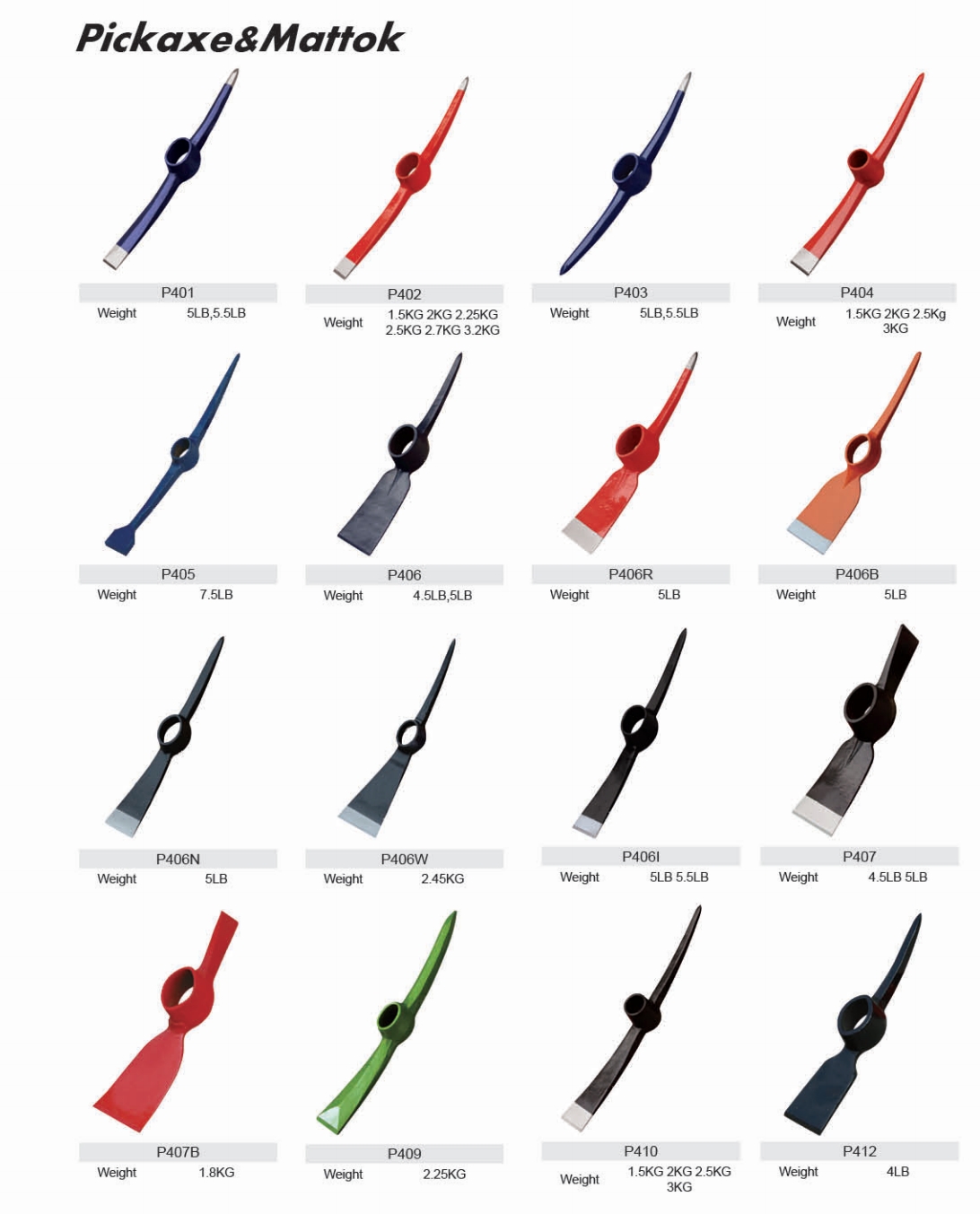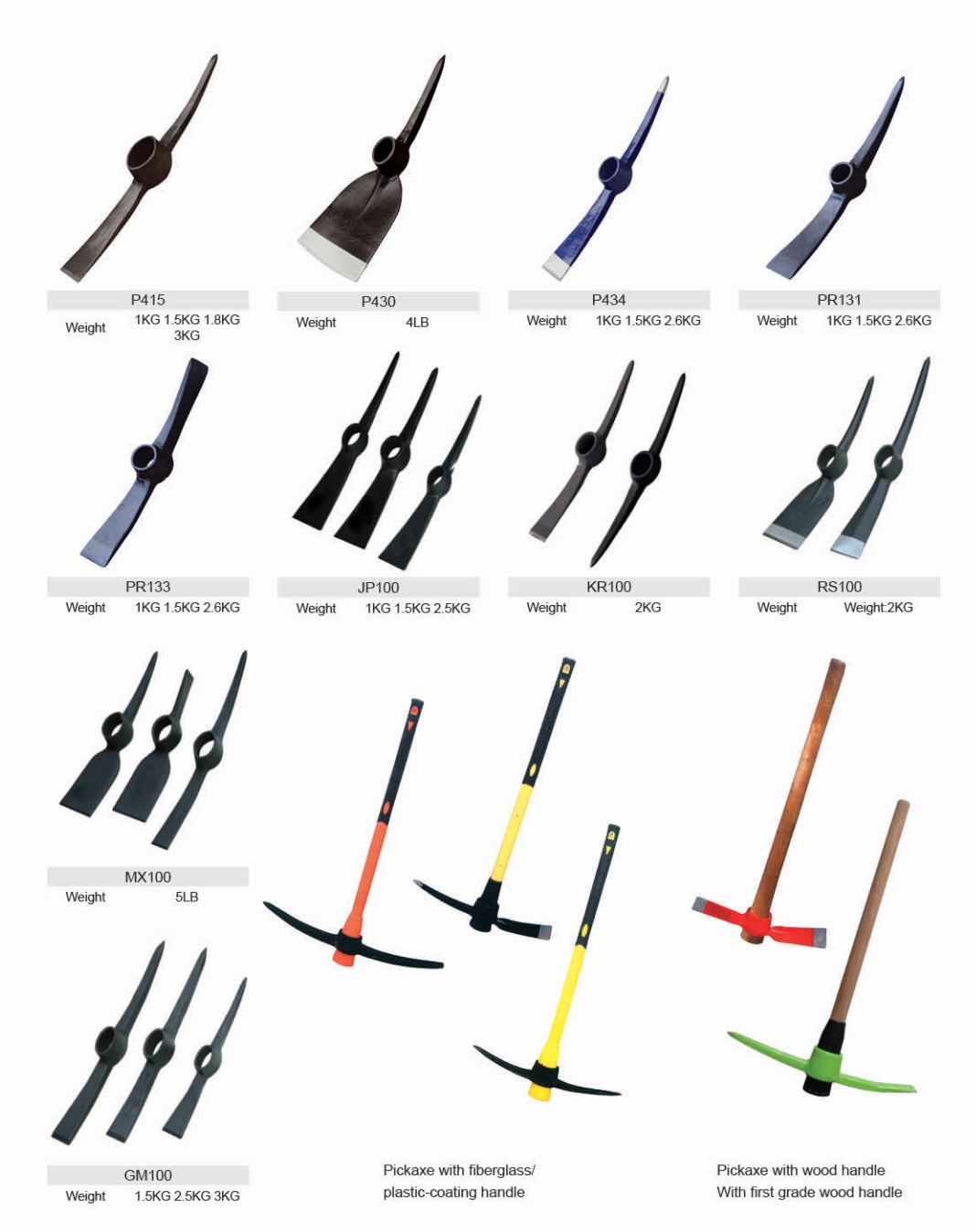News
Farming in Africa often means facing tough, sun-baked soil, dense roots, and uneven terrain that can quickly wear out inferior tools. That’s where the Husky Pickaxe steps in as a game-changer for hardworking farmers. Built with a durable steel head and a sturdy, ergonomic handle, this tool delivers the strength needed to break hard ground and prepare soil efficiently.

1. Why the Husky Pickaxe is Ideal for African Farming Needs
African farming conditions often demand tools that can withstand extreme heat, dry seasons, and compacted soil. I find the husky pickaxe perfect for this environment because of its strength and adaptability. Its forged steel head cuts through hard ground, rocky patches, and dense roots with ease. The ergonomic handle reduces fatigue during long hours in the field, which is essential for farmers who work from dawn to dusk. In my experience, this tool handles various crops and terrains—from maize fields in East Africa to cassava farms in West Africa—without losing its edge. The husky pickaxe’s balance of weight and design ensures efficient strikes that save both time and energy. For farmers who want a reliable tool that lasts for years under challenging conditions, it stands out as one of the most effective investments they can make.
2. Key Features That Make the Husky Pick Axe Stand Out
The husky pick axe offers several design features that set it apart from standard farm tools. I value its high-carbon steel head, which resists wear and retains sharpness over time. The pointed end penetrates compact soil, while the flat end breaks clumps and levels ground. Its handle is often made from fiberglass or hardwood, providing both strength and comfort. I’ve noticed that the weight distribution is excellent, allowing controlled swings without overexertion. This makes it easier to work for hours without strain. The head-to-handle connection is reinforced, reducing the risk of loosening or breakage during heavy use. Anti-slip grips give me better control, even when my hands are sweaty or wet. For farmers who need a multi-purpose tool that excels in durability, performance, and ergonomics, the husky pick axe is a superior choice compared to many lower-quality alternatives available in the market.
3. How to Use a Husky Pickaxe for Maximum Field Efficiency
Using a husky pickaxe effectively starts with proper stance and controlled swings. I always ensure my feet are shoulder-width apart for stability, and I grip the handle firmly with both hands. The pointed end is best for breaking through hard or rocky soil, while the chisel end is ideal for clearing weeds and leveling ground. I work in sections, targeting small areas at a time to avoid fatigue. It’s important not to rely on brute force alone; letting the tool’s weight do part of the work increases efficiency. I also keep the head sharp to maintain performance, as dull edges require more effort and slow down progress. By alternating between digging and clearing, I maximize productivity without overstraining my body. This approach allows me to complete tasks faster, making the husky pickaxe a true time-saving asset for demanding agricultural work in Africa.
4. Choosing the Right Husky Pick Axe for Your Soil Type
Selecting the right husky pick axe depends heavily on the type of soil you work with. In areas with rocky or clay-heavy ground, I recommend a heavier head for stronger penetration. For sandy or loamy soils, a lighter version allows faster swings and less strain. Handle length also matters—longer handles provide more leverage, while shorter ones offer better control in tight spaces. I pay attention to handle material; fiberglass resists weather damage, while hardwood offers a traditional feel and shock absorption. The head’s shape should match your main farming tasks: a sharper point for digging and breaking, or a wider chisel for clearing and grading. By matching the pick axe’s design to local conditions, I ensure I’m working smarter, not harder. This customization makes a big difference in efficiency, durability, and overall comfort during long days in the field.
5. Maintenance Tips to Keep Your Husky Pickaxe company in Top Shape
To keep my husky pickaxe performing at its best, I follow a strict maintenance routine. After each use, I clean the head to remove soil, moisture, and plant residue. I store it in a dry area to prevent rust, and I apply a light coat of oil to the steel head periodically. For wooden handles, I sand and oil them occasionally to prevent cracks, while fiberglass handles just need a wipe-down. I also inspect the head-to-handle joint regularly to ensure it remains secure. If I notice any dullness in the head, I sharpen it with a file to maintain cutting efficiency. By addressing minor wear early, I avoid costly replacements and extend the tool’s lifespan. A well-maintained husky pickaxe not only works better but also feels safer in hand, giving me confidence during every swing in the field.
6. Comparing the Husky Pick Axe to Other Farming Tools
When I compare the husky pick axe to hoes, shovels, and mattocks, its versatility stands out. A hoe is excellent for weeding but lacks the force to break compact soil. Shovels move loose material well but struggle in hard terrain. Mattocks are effective for chopping roots but not as precise in digging narrow trenches. The husky pick axe combines the strengths of these tools into one compact design. Its pointed tip breaks through hard soil like a pry bar, while the chisel side levels and clears areas efficiently. I’ve found that carrying one husky pick axe into the field often eliminates the need for multiple tools, saving both time and effort. For African farmers managing diverse tasks—like opening planting rows, clearing fields, and preparing irrigation channels—it’s a cost-effective, multi-purpose solution that outperforms many specialized implements.
7. Common Mistakes When Using a Husky Pickaxe tool and How to Avoid Them
I often see farmers using the husky pickaxe with too much force, which leads to fatigue and even injury. The key is letting the tool’s weight do the work rather than relying solely on muscle power. Another mistake is working without gloves, which can cause blisters and reduce grip. Using the wrong end of the pick for the task also slows down progress; the pointed tip should be for hard soil, while the flat end is for clearing. Poor posture, such as bending too much at the waist, can lead to back strain—keeping a slight knee bend and a straight back helps prevent this. Neglecting maintenance is another issue, as dull or loose heads make work harder and less safe. By avoiding these common errors, I make my husky pickaxe work smarter and last longer in the demanding African farming environment.
8. Best Practices for Husky Pick Axe Storage and Safety
Proper storage keeps my husky pick axe in peak condition and ensures safety on the farm. I never leave it lying on the ground where someone could trip over it or damage the blade. Instead, I hang it on a wall rack or store it in a designated tool shed. Before storage, I always clean and dry the head to prevent rust. For safety, I cover the blade with a guard or wrap it in cloth. When transporting it to the field, I carry it with the head facing downward and away from my body. Wearing gloves and sturdy boots further reduces the risk of injury. By treating the husky pick axe with care, I extend its life, maintain its performance, and keep my work area safe for myself and others who might be nearby.

| Model Name | Material (Head / Handle) | Color Options | Size (Length) | Specifications |
|---|---|---|---|---|
| Husky 5 lb Pickaxe | Forged High-Carbon Steel / Fiberglass Handle | Black & Red | 36 in (91 cm) | 5 lb head weight; pointed tip for breaking hard soil; chisel end for trenching |
| Husky 3 lb Pickaxe | Forged Steel / Hardwood Handle | Natural Wood & Black | 36 in (91 cm) | 3 lb head weight; shock-absorbing wooden handle; ideal for light to medium digging |
| Husky Mini Pickaxe | Drop-Forged Steel / Fiberglass Handle | Yellow & Black | 16 in (41 cm) | Lightweight design; compact size for tight spaces; anti-slip grip |
| Husky Cutter Mattock | Forged Steel / Fiberglass Handle | Orange & Black | 36 in (91 cm) | Dual-function head: pick end for breaking ground; mattock end for chopping roots |
| Husky Heavy-Duty Pickaxe | Heat-Treated Steel / Fiberglass Handle | Red & Black | 36 in (91 cm) | Extra-thick handle core; reinforced head attachment; designed for rocky soil |

 Sitemap
Sitemap